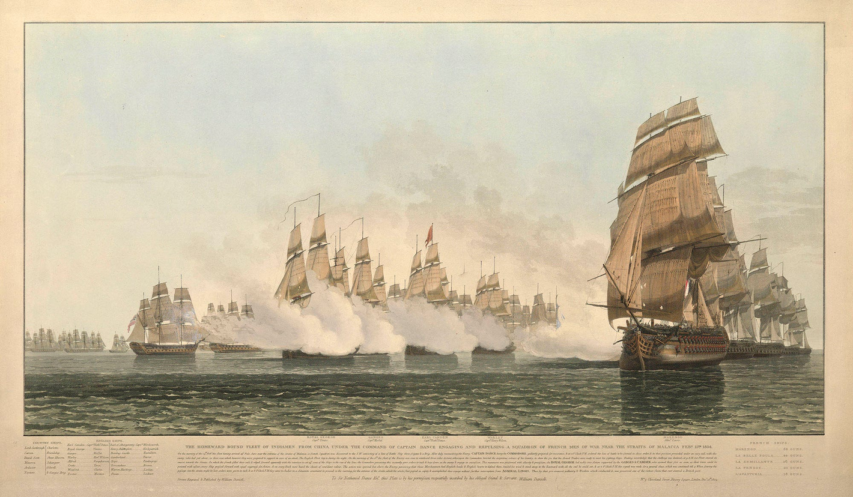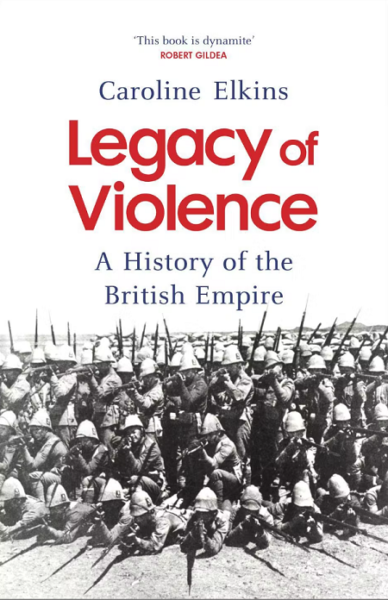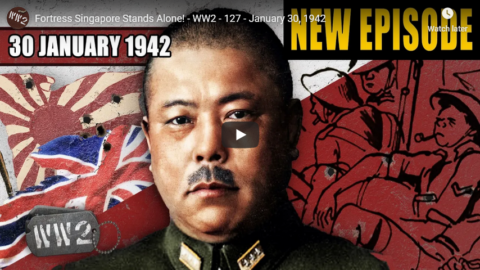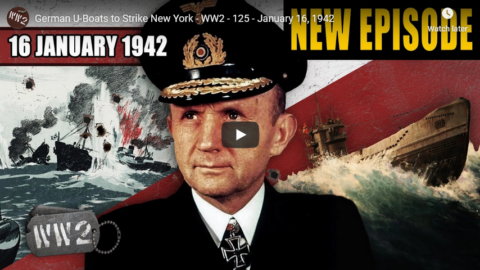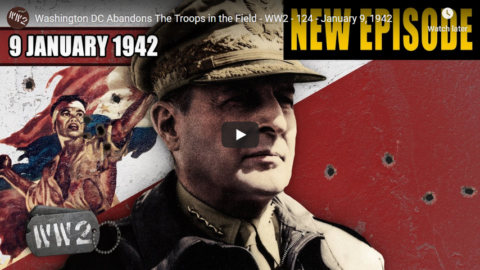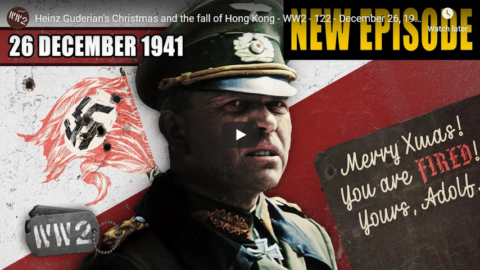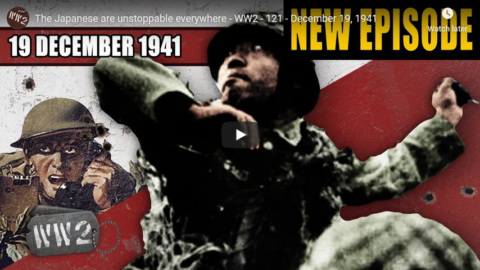The History Chap
Published Nov 16, 2023Britain’s Victorious Jungle War Against the Communists
Get My FREE Weekly Newsletter
https://www.thehistorychap.com
February 22, 2024
The Malayan Emergency – Britain’s Jungle War v Communists
April 22, 2023
The action off Pula Aura, February 1804
Ned Donovan recounts a very dangerous moment for the British East India Company — and the larger British economy — as a French naval squadron threatened the EIC’s China Fleet carrying a cargo that would be the rough equivalent of £750 million in today’s money:
It will not be surprising to any reader that the East India Company was arrogant. A company that, as William Dalrymple describes, had become “an empire within an empire”. It controlled much of India, had its own army, and its revenues kept Britain afloat. Its navy was also not to be sniffed at, made up of large, well-built ships (known as Indiamen) capable of being as armed as any British warship, but its commercial arrogance prevented this. Rather than fill these Indiamen with cannons and the hundreds of sailors needed to man them, it instead filled its gun ports with dummy cannons and its decks with luxurious cabins and storage for trade goods, maintaining crews only large enough to sail these ships and be stewards to its paying passengers.
Commodore Dance would have been pondering those dummy cannons as the ships he had sent to look at the four strange sail in the southwest reported back that it was four French warships, Linois’s squadron. He was practically defenceless. To protect his 30 ships and their precious cargo, he had one small armed brig named the Ganges with around a dozen guns. Up against him were the 186 guns of the French squadron, 74 in Marengo, 40 in Belle Poule, 36 in Semillante, 20 in Berceau and 16 in Aventurier. As Dance watched through his telescope, the French ships hoisted their colours, and the admiral’s flag of Linois broke out above Marengo. He needed a plan. Fast.
After a night of cat and mouse between the French and British, Dance ordered his convoy into a long single line and at the front put four of the largest Indiamen – the Royal George, Earl Camden, Warley, and Alfred. He then commanded that these four hoist blue ensigns, the sign of Royal Navy ships. This wasn’t the most absurd plan; the East India Company, in their arrogance, had a policy of painting their Indiamen to look like Royal Navy ships – as Dance records in his despatch: “We hoisted our colours and offered him battle.” But Linois and his ships continued to approach the convoy slowly, with Dance realising that the French intended to separate the convoy and take it apart piece by piece. It was now or never, and Dance took the initiative. At 1 pm, he ordered the Ganges, Royal George, Earl Camden, Warley and Alfred to turn and intercept the French. All the ships turned perfectly and crossed Linois, and at 1:15 pm, the French opened fire on the Royal George. In the preceding night, the convoy had put all the guns they had on these five ships and filled them with as many brave volunteers as they could. All five returned fire on the French warships, and one sailor on the Royal George was killed. I will let Dance take over here:
“But before any other ship could get into action, the enemy hauled their wind and stood away to the east under all the sail they could set. At 2 pm, I made the signal for a general chase and we pursued them until 4 pm.”
In around 40 minutes, Dance and his handful of real guns and dummy cannons had forced the French warships to withdraw under the belief it had engaged an elite squadron of Royal Navy ships. Not content with this victory, he then ordered his ships to chase the French down and stop them from returning. By the later afternoon, it was clear Linois had run, and Dance ordered his convoy to regroup and make for the safety of Malacca.
In the Straits of Malacca, Dance met the ships the Royal Navy had sent to escort him on the outbreak of war but would have been too late had the commodore not thought fast. The China Fleet passed the rest of its voyage without incident, returning to Britain in the summer of 1804.
To say the country was ecstatic would be an understatement. If the China Fleet and its £8 million had been taken, as Linois would have been perfectly able to do, it is evident that both the East India Company and Lloyds of London would have faced bankruptcy and collapse. Nathaniel Dance was knighted by George III and given a fantastic sword by Lloyds worth 100 guineas. With the sword came £5,000 (£403,000 today) from the Bombay Insurance Company and £500 a year (£40,000 today) from the East India Company, along with a share in the £50,000 given to all who sailed in convoy. Sir Nathaniel retired immediately and never took to the sea again, dying peacefully in 1827.
Poor Admiral Linois, on the other hand, never lived down the fracas, with Napoleon writing after the event, “[Linois] has shown want of courage of mind, that kind of courage which I consider the highest quality in a leader”. Despite that, Linois remained in the French navy … only to once again run into the fickleness of fate:
It is worth remarking that following the defeat at Pulo Aura, Linois had a similarly pathetic rest of the war that ended in a wonderfully ironic way. In 1806, the admiral was captured when he mistook a British squadron of warships for a merchant convoy.
Irony? That’s cosmic level stuff.
November 19, 2022
Prelude to Victory: Burma, 1942
Army University Press
Published 11 Feb 2022In late 1941 and early 1942 the Imperial Japanese Army swept through the Asia-Pacific region like a wildfire. The Allies appeared powerless to stop them. With the British Army in Asia reeling, and pushed back to the frontier of India, something had to be done to stem the tide. “Prelude to Victory: Burma, 1942” provides context for Field Marshal William J. Slim and the 14th Army’s struggle to retake Burma from the Japanese.
October 24, 2022
The Beretta AR70
Forgotten Weapons
Published 2 May 2017After failing to acquire a license to produce the M16 rifle, Beretta worked with SIG from 1963 through 1968 to develop 5.56mm infantry rifles. When the companies parted ways, SIG went on to produce the SIG-540 and Beretta developed the AR-70. It was introduced on the market in 1972, and was adopted by the militaries of Jordan and Malaysia, as well as Italian special forces units (the Italian Army at large would adopt the 70/90 version in 1990).
The AR-70 takes several cues from the AK series of rifles, including the rock-in magazine with large rear paddle release and a two lug rotating bolt. In a somewhat unorthodox choice, the rifle uses a coil spring in tension for its mainspring, located around the gas piston and in front of the bolt. While this would likely cause heat-related problems in a light machine gun, it appears to have been acceptable in a rifle, as the improved 70/90 version maintain the same system. It does also allow simple use of folding or collapsing stocks, as there are no working parts in the stock.
Only a relatively small number of commercial AR70/223 rifles came into the United States in the 1980s, and they are a relatively unknown member of the black rifle family.
(more…)
October 10, 2022
Look at Life — Trouble Shooters (1964)
PauliosVids
Published 20 Nov 2018
From the comments:
David Mills
1 year ago
We never wore berets but jungle hats. This is an honest attempt to illustrate their role but so obviously, painfully stage managed. In reality, it was a hot, sweaty, stinking environment with constant tensions. Contacts were few and far between. Going into the IBAN long houses and chatting with the headman (Kampong Ketua) was fascinating, useful and, for the short period, relaxing. Between June 1965 and Aug 1982 I had four tours in the area. Learning Malay was essential and welcomed by the indigenous population.Iolis
1 year ago
The late Paddy Ashdown at 6.36. Later in life he would becone leader of Britain’s Liberal Democrat Party. He sadly died on 22 December 2018.
September 16, 2022
Look at Life — East of Suez (1966)
PauliosVids
Published 20 Nov 2018More than 50,000 British soldiers, sailors and airmen police the rivers and jungles of Borneo.
May 31, 2022
A new history of the evil empire. No, not that one. Not that one either. The other evil empire!
In The Critic, Barnaby Crowcroft reviews Caroline Elkins’ new history of the British empire, Legacy of Violence:
Elkins is correct that British decolonisation after the end of the war — if not “white-washed” — has got off lightly among historians, often via a contrast with the dreadful behaviour of the French. We remain far too influenced by the impression that Britain willingly and amicably handed over power (as Harold Macmillan put it) to Asian and African representatives of “agreeable, educated, Liberal, North Oxford society”.
There is a single map in this book which should definitively dispose of such ideas, showing all the colonial conflicts and states of emergency Britain was engaged in around the world after 1945. There are the well-known counterinsurgencies in Palestine, Malaya, Kenya, Cyprus and Aden. Alongside other, less well-known ones, however — British Guiana, Malaysia, Belize, Oman and the New Hebrides — bring us pretty much into the 1980s without a single year of global colonial peace.
In Kenya and Malaya, the British carried out massive coercive interventions in the 1950s, including the forcible resettlement of over a million people into closely monitored “new villages”, which, if they cannot be likened to concentration camps, certainly resemble the kinds of things the French were doing in Algeria. Difficult though it is to believe today, until very recently the British were a “warlike” and patriotic people, and their agents could be ruthless in the pursuit of imperial interest overseas.
Unfortunately, it is not possible to take seriously the more grandiose claims of Legacy of Violence, including Elkins’ presumption to have uncovered the Key to All Mythologies of British imperial wickedness in the form of Liberalism and Racism. The prose is part of the problem. Her introductory statement of the book’s bombastic aims reads more like something written by a professional satirist, than a professional historian.
“To study the British empire,” she writes, “is to unlock memory’s gate using the key of historical enquiry. But once inside, history’s fortress is bewildering … Unlike mythical fire-breathing monsters, however, the creatures inhabiting the annals of Britain’s imperial past are not illusions [but] monstrosities [which] inflicted untold suffering …”
Much of the book is given over to a plodding chronicle of nineteenth- and twentieth-century British history, in which events are construed — and often misconstrued — to give the meanest possible interpretation. British “arch-imperialists” resemble cartoon villains, who wear “Hitleresque moustaches” and “racist coattails” and are awarded MBEs and OBEs according to how much harm they inflict upon colonial subjects. There is even an imaginative reconstruction of British pilots all but laughing as they machine-gun “defenceless women and children”; readers are invited to listen to their “screams of pain”.
To determine whether Britain’s empire was uniquely violent invites the question: compared to what? Niall Ferguson earned opprobrium for suggesting in 2003 that alongside the rival empires which arose to challenge it in the middle of the twentieth century, Britain’s looked pretty attractive.
To her credit, Elkins does not disagree with this. Her treatment of Malaya’s communist insurgency suggests that she is not particularly exercised by violence when it is committed by ideological confrères. The only thing we get in the way of any broader comparison, however, is the notably wishy-washy one implied between the “East and the West”, which she describes as the contrast between “humanity and inhumanity”.
October 27, 2021
Looting WW2 Java Sea Wrecks – “The Biggest Grave Robbery in History”
Historigraph
Published 26 Oct 2021Support on Patreon to help keep the videos coming https://www.patreon.com/historigraph
Come join the historigraph discord: https://discord.gg/cjTaHFNAjS
Buy Historigraph Posters here! historigraph.creator-spring.comFollow me on Twitch for upcoming livestreams! https://www.twitch.tv/historigraph
► Second Channel: https://www.youtube.com/channel/UCpIj…
► Twitter: https://twitter.com/historigraph
► Instagram: https://www.instagram.com/historigraphSources:
[A] Mediacorp documentary on the salvaging: https://www.youtube.com/watch?v=k9iRR…
[B] Footage of the wreck of Prince of Wales, by Nigel Sinclair – https://www.youtube.com/watch?v=YD96F…
[C] Footage of the wreck of Repulse, by Clayton Neilson – https://www.youtube.com/watch?v=T3U_e…[1] https://www.bbc.co.uk/news/world-asia…
[2] https://www.theguardian.com/world/201…
[3] https://www.theguardian.com/world/201…
[4] https://www.theguardian.com/world/ng-…
[5] https://ses.library.usyd.edu.au/bitst…
[6] https://www.reclamet.co.uk/scrap-meta…
[7] https://www.nst.com.my/news/2015/10/n…
[8] https://www.maritime-executive.com/ar…
September 18, 2021
What if Pearl Harbor Never Happened, Life in Cyprus, and Peasant Armies of China – WW2 – OOTF 024
World War Two
Published 17 Sep 2021Ever wonder what would have happened if Japan just never attacked Pearl Harbor but invaded the Indies anyway? Or how the people of Cyprus are faring in the war? Or if the Chinese armies had any specialized combat forces? Find out in this Out of the Foxholes!
(more…)
January 31, 2021
Fortress Singapore Stands Alone! – WW2 – 127 – January 30, 1942
World War Two
Published 30 Jan 2021The Japanese advance on Singapore has gotten close enough that the British have destroyed the causeway to Singapore Island. The Japanese are also making attacks in the Solomon Islands, Burma, the Philippines, and the Dutch East Indies — their threat to Australia is real. Erwin Rommel’s surprise spoiler offensive in North Africa takes Benghazi, and on the eastern front the Soviets break a hole in the German lines in the north even as the temperature drops to the -50s.
Join us on Patreon: https://www.patreon.com/TimeGhostHistory
Or join The TimeGhost Army directly at: https://timeghost.tvFollow WW2 day by day on Instagram @ww2_day_by_day – https://www.instagram.com/ww2_day_by_day
Between 2 Wars: https://www.youtube.com/playlist?list…
Source list: http://bit.ly/WW2sourcesWritten and Hosted by: Indy Neidell
Director: Astrid Deinhard
Producers: Astrid Deinhard and Spartacus Olsson
Executive Producers: Astrid Deinhard, Indy Neidell, Spartacus Olsson, Bodo Rittenauer
Creative Producer: Maria Kyhle
Post-Production Director: Wieke Kapteijns
Research by: Indy Neidell
Edited by: Iryna Dulka
Sound design: Marek Kamiński
Map animations: Eastory (https://www.youtube.com/c/eastory)Colorizations by:
– Mikołaj Uchman
– Jaris Almazani (Artistic Man) – https://instagram.com/artistic.man
– Norman Stewart – https://oldtimesincolor.blogspot.com/Sources:
– JoJan, Berserker276 – from Wikimedia Commons
– National Portrait Gallery
– Termometer by Andi Nur Abdillah from the Noun Project
– Bundesarchiv – Bild 101I-811-1881-33
– Mil.ruSoundtracks from the Epidemic Sound:
– Rannar Sillard – “Easy Target”
– Jo Wandrini – “Dragon King”
– Rannar Sillard – “Split Decision”
– Craft Case – “Secret Cargo”
– Reynard Seidel – “Rush of Blood”
– Flouw – “A Far Cry”
– Fabien Tell – “Weapon of Choice”
– Johan Hynynen – “Dark Beginning”
– Gunnar Johnsen – “Not Safe Yet”
– Fabien Tell – “Last Point of Safe Return”Archive by Screenocean/Reuters https://www.screenocean.com.
A TimeGhost chronological documentary produced by OnLion Entertainment GmbH.
January 24, 2021
The Formalization of Extermination – The Wannsee Conference – WW2 – 126 – January 23, 1942
World War Two
Published 23 Jan 2021Nazi Germany’s “Holocaust by Bullets” has already claimed over a million lives over the past 8 months; this week German authorities hold a conference to streamline and systematize the process of extermination. Gas will now be the preferred method of murder. The Japanese are murdering Allied soldiers that fall into their hands as they advance ever closer to Singapore. The Soviet offensive continues along the entire Eastern Front, but the orders and objectives grow ever more confusing and chaotic. In North Africa, Erwin Rommel launches a surprise offensive against the Allies and make a lightning advance the final two days of the week.
Join us on Patreon: https://www.patreon.com/TimeGhostHistory
Or join The TimeGhost Army directly at: https://timeghost.tvFollow WW2 day by day on Instagram @ww2_day_by_day – https://www.instagram.com/ww2_day_by_day
Between 2 Wars: https://www.youtube.com/playlist?list…
Source list: http://bit.ly/WW2sourcesWritten and Hosted by: Indy Neidell
Director: Astrid Deinhard
Producers: Astrid Deinhard and Spartacus Olsson
Executive Producers: Astrid Deinhard, Indy Neidell, Spartacus Olsson, Bodo Rittenauer
Creative Producer: Maria Kyhle
Post-Production Director: Wieke Kapteijns
Research by: Indy Neidell
Edited by: Iryna Dulka
Sound design: Marek Kamiński
Map animations: Eastory (https://www.youtube.com/c/eastory)Colorizations by:
– Norman Stewart – https://oldtimesincolor.blogspot.com/
– Mikołaj Uchman
– Jaris Almazani (Artistic Man) – https://instagram.com/artistic.man
– Adrien Fillon – https://www.instagram.com/adrien.colo…Sources:
– IWM SE 4819
– Mil.ru
– Bundesarchiv
– ammo by Nociconist, Fruits by Icongeek26, Oil Tank by Mangsaabguru, from the Noun Project
– JoJan from Wikimedia Commons
– Yad Vashem 1427_85, 2CO1, 4613_360Soundtracks from the Epidemic Sound:
– Rannar Sillard – “Easy Target”
– Flouw – “A Far Cry”
– Fabien Tell – “Weapon of Choice”
– Reynard Seidel – “Rush of Blood”
– Edward Karl Hanson – “Spellbound”
– Johan Hynynen – “Dark Beginning”
– Johannes Bornlöf – “The Inspector 4”
– Gunnar Johnsen – “Not Safe Yet”
– Rannar Sillard – “Split Decision”
– Howard Harper-Barnes – “London”
– Christian Andersen – “Barrel”
– Cobby Costa – “From the Past”Archive by Screenocean/Reuters https://www.screenocean.com.
A TimeGhost chronological documentary produced by OnLion Entertainment GmbH.
January 17, 2021
German U-Boats to Strike New York – WW2 – 125 – January 16, 1942
World War Two
Published 16 Jan 2021Operation Pauchenslag, long-range German submarines operating just off the US Coast, kicks into action this week, as does the Japanese invasion of the Dutch East Indies. They also take Kuala Lumpur. Meanwhile, the Soviet Red Army offensive all along the Eastern Front has its first full week of action, with the Soviets making some real territorial gains in the center, though a German offensive in the Crimea catches them off guard.
Join us on Patreon: https://www.patreon.com/TimeGhostHistory
Or join The TimeGhost Army directly at: https://timeghost.tvFollow WW2 day by day on Instagram @ww2_day_by_day – https://www.instagram.com/ww2_day_by_day
Between 2 Wars: https://www.youtube.com/playlist?list…
Source list: http://bit.ly/WW2sourcesWritten and Hosted by: Indy Neidell
Director: Astrid Deinhard
Producers: Astrid Deinhard and Spartacus Olsson
Executive Producers: Astrid Deinhard, Indy Neidell, Spartacus Olsson, Bodo Rittenauer
Creative Producer: Maria Kyhle
Post-Production Director: Wieke Kapteijns
Research by: Indy Neidell
Edited by: Karolina Dołęga
Sound design: Marek Kamiński
Map animations: Eastory (https://www.youtube.com/c/eastory)Colorizations by:
– Daniel Weiss
– Spartacus Olsson
– Mikołaj UchmanSources:
– National Archives NARA
– Narodowe Archiwum Cyfrowe NAC
– Imperial War Museums: NYP 45042, A 6920, HU 90349, A 7371, C3881, E 9572, A 7376, E 9569,
– Library of Congress
– Bundesarchiv
– United States Signal Corps. source – Washington County Free Library Photo WCRH018
– FDR Presidential Library
– United States Holocaust Museum
– Yad Vashem: 4613-1055, 5138-98, 86FO2, 4220-3,Soundtracks from Epidemic Sound:
– “Remembrance” – Fabien Tell
– “Dragon King” – Jo Wandrini
– “The Unexplored” – Philip Ayers
– “Maze Heist” – Max Anson
– “London” – Howard Harper-Barnes
– “Document This 1” – Peter Sandberg
– “First Responders” – Skrya
– “The End Of The World 2” – Håkan Eriksson
– “Dark Beginning” – Johan HynynenArchive by Screenocean/Reuters https://www.screenocean.com.
A TimeGhost chronological documentary produced by OnLion Entertainment GmbH.
January 10, 2021
Washington DC Abandons The Troops in the Field – WW2 – 124 – January 9, 1942
World War Two
Published 9 Jan 2021The US government realizes that it cannot send help to relieve the US and Filipino forces in the Philippines, but it does not tell those forces. Meanwhile in the USSR, a huge Red Army offensive against entrenched German forces begins along the entire frontline. The Germans have pulled back in North Africa, though, to consolidate. The Japanese enter Manila and advance in Malaya, but are forced to withdraw in China.
Join us on Patreon: https://www.patreon.com/TimeGhostHistory
Or join The TimeGhost Army directly at: https://timeghost.tvFollow WW2 day by day on Instagram @ww2_day_by_day – https://www.instagram.com/ww2_day_by_day
Between 2 Wars: https://www.youtube.com/playlist?list…
Source list: http://bit.ly/WW2sourcesWritten and Hosted by: Indy Neidell
Director: Astrid Deinhard
Producers: Astrid Deinhard and Spartacus Olsson
Executive Producers: Astrid Deinhard, Indy Neidell, Spartacus Olsson, Bodo Rittenauer
Creative Producer: Maria Kyhle
Post-Production Director: Wieke Kapteijns
Research by: Indy Neidell
Edited by: Iryna Dulka
Sound design: Marek Kamiński
Map animations: Eastory (https://www.youtube.com/c/eastory)Colorizations by:
– Julius Jääskeläinen – https://www.facebook.com/JJcolorization/
– Jaris Almazani (Artistic Man) – https://instagram.com/artistic.man?ig…
– Carlos Ortega Pereira, BlauColorizations – https://www.instagram.com/blaucolorizations
– Norman Stewart – https://oldtimesincolor.blogspot.com/
– Michał UchmanSources:
– IWM FE 239
– Supermarine Spitfire By Joel Wisneski from the Noun Project
– Container by Shocho from the Noun ProjectMusic from Epidemic Sound:
– “Easy Target” – Rannar Sillard
– “Deflection” – Reynard Seidel
– “Growing Doubt” – Wendel Scherer
– “Secret Cargo” – Craft Case
– “Trapped in a Maze” – Philip Ayers
– “Not Safe Yet” – Gunnar Johnsen
– “Underlying Truth” – Howard Harper-Barnes
– “Spellbound” – Edward Karl Hanson
– “On the Edge of Change” – Brightarm Orchestra
– “Split Decision” – Rannar Sillard
– “Out the Window” – Wendel SchererArchive by Screenocean/Reuters https://www.screenocean.com.
A TimeGhost chronological documentary produced by OnLion Entertainment GmbH.
December 27, 2020
Heinz Guderian’s Christmas and the fall of Hong Kong – WW2 – 122 – December 26, 1941
World War Two
Published 26 Dec 2020The Japanese offensives and advances in Southeast Asia and the Pacific continue unabated and both Hong Kong and Wake Island fall. British and American leaders begin the Arcadia Conference to decide just how they are going to fight this war together, and there are more changes made in the German High Command on the Eastern Front, even as the Soviets make advances there.
Check out Jean Paul’s museum here: https://www.romagne14-18.com/english-…
Join us on Patreon: https://www.patreon.com/TimeGhostHistory
Or join The TimeGhost Army directly at: https://timeghost.tvFollow WW2 day by day on Instagram @ww2_day_by_day – https://www.instagram.com/ww2_day_by_day
Between 2 Wars: https://www.youtube.com/playlist?list…
Source list: http://bit.ly/WW2sources
—Written and Hosted by: Indy Neidell
Director: Astrid Deinhard
Producers: Astrid Deinhard and Spartacus Olsson
Executive Producers: Astrid Deinhard, Indy Neidell, Spartacus Olsson, Bodo Rittenauer
Creative Producer: Maria Kyhle
Post-Production Director: Wieke Kapteijns
Research by: Indy Neidell
Edited by: Iryna Dulka
Sound design: Marek Kamiński
Map animations: Eastory (https://www.youtube.com/c/eastory)Colorizations by:
– Dememorabilia – https://www.instagram.com/dememorabilia/
– Carlos Ortega Pereira, BlauColorizations – https://www.instagram.com/blaucolorizations
– Norman Stewart – https://oldtimesincolor.blogspot.com/Sources:
– IWM: FE 203
– Battleship by Anand Prahlad from the Noun Project
– Man by Milinda Courey from the Noun Project
– prisoner by Luis Prado from the Noun Project
– bockelsound from freesound.orgArchive by Screenocean/Reuters https://www.screenocean.com.
A TimeGhost chronological documentary produced by OnLion Entertainment GmbH.
December 20, 2020
The Japanese are unstoppable everywhere – WW2 – 121 – December 19, 1941
World War Two
Published 19 Dec 2020The Japanese make gains in Malaya, Burma, Hong Kong, Borneo, and the Philippines. The Allies also have trouble in the Atlantic and the Mediterranean, where they are beginning to seriously suffer from a lack of capital ships. The Soviet Red Army is advancing, though, and Stalin takes personal control of planning for the upcoming counteroffensive, while Adolf Hitler takes personal control of the German Army.
Join us on Patreon: https://www.patreon.com/TimeGhostHistory
Or join The TimeGhost Army directly at: https://timeghost.tvFollow WW2 day by day on Instagram @ww2_day_by_day – https://www.instagram.com/ww2_day_by_day
Between 2 Wars: https://www.youtube.com/playlist?list…
Source list: http://bit.ly/WW2sourcesWritten and Hosted by: Indy Neidell
Director: Astrid Deinhard
Producers: Astrid Deinhard and Spartacus Olsson
Executive Producers: Astrid Deinhard, Indy Neidell, Spartacus Olsson, Bodo Rittenauer
Creative Producer: Maria Kyhle
Post-Production Director: Wieke Kapteijns
Research by: Indy Neidell
Edited by: Miki Cackowski
Sound design: Marek Kamiński
Map animations: Eastory (https://www.youtube.com/c/eastory)Colorizations by:
Norman Stewart – https://oldtimesincolor.blogspot.com/
Dememorabilia – https://www.instagram.com/dememorabilia/
Julius Jääskeläinen – https://www.facebook.com/JJcolorization/
Carlos Ortega Pereira, BlauColorizations, https://www.instagram.com/blaucolorizations
Spartacus Olsson
Daniel Weiss
Mikołaj UchmanSources:
Bundesarchiv
IWM MH 26392, WPN 298, K 2204, FL 20432, A 12126, A 9257, FL 1203, E 3469E
Mil.ru
Narodowe Archiwum Cyfrowe
Picture of Mark Young, courtesy of National Portrait GallerySoundtracks from the Epidemic Sound:
Phoenix Tail – “At the Front”
Reynard Seidel – “Deflection”
Skrya – “First Responders”
Hakan Eriksson – “Epic Adventure Theme 4”
Philip Ayers – “The Unexplored”
Max Anson – “Ancient Saga”
Rannar Sillard – “March Of The Brave 9”
Johannes Bornlof – “Death And Glory 2”
Johan Hynynen – “Dark Beginning”
Fabien Tell – “Last Point of Safe Return”Archive by Screenocean/Reuters https://www.screenocean.com.
A TimeGhost chronological documentary produced by OnLion Entertainment GmbH.

